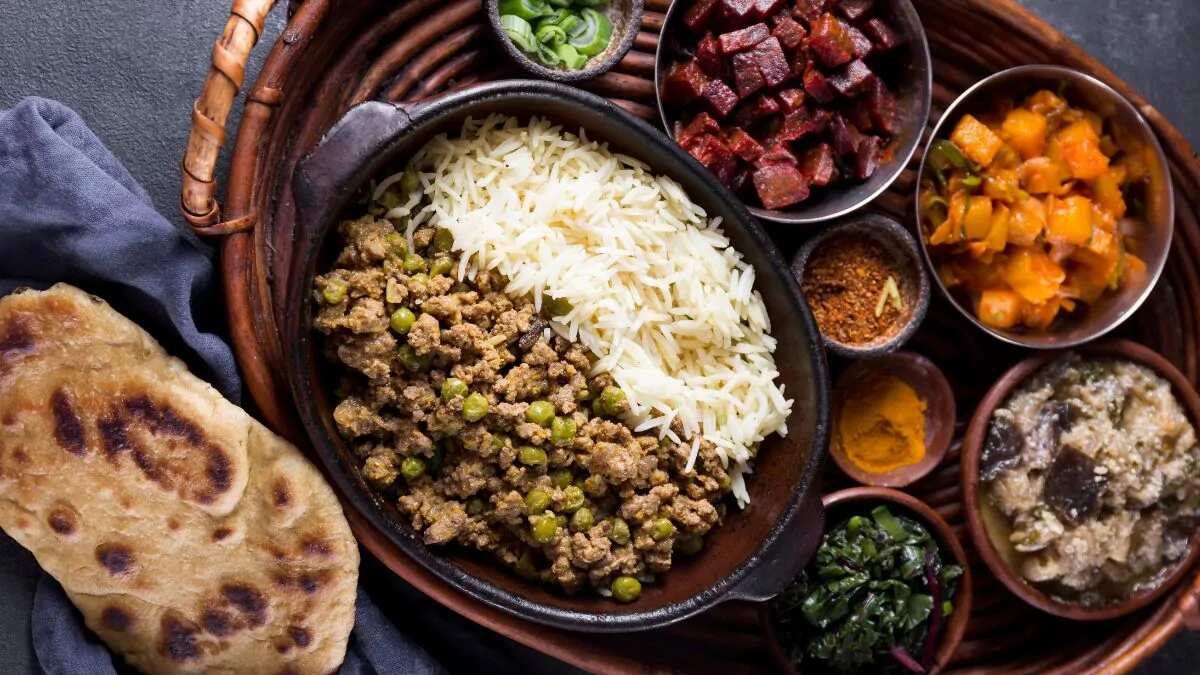
Amongst the fabric of micro-cuisines in India, the food of the Sindhi community - although well-known - has been relatively underrated in its recognition. While certain delicacies like the kadhi-arbi tuk combination, the dal pakwaan, sev barfi and sai bhaji are amongst popular favourites, niche specialties aren’t as much in the spotlight. The simple cooking techniques adapted by the community, along with their liberal use of vegetables, spices and varied textures, makes their food unique and indulgent - although the foundations are based in easy to find ingredients. Bordering on eclectic, Sindhi food is also known for upscaling leftovers and transforming them into dishes that change the perception of what an ingredient is meant to serve as - one such example being the mackroli patata - better known as macaroni with potatoes. Similarly, shifting the focus to some obscure preparations, is a list of delicacies that are approachable for just about anyone who cooks or wants to try something different for their next mealtime.
Bhuga Chanwar
Beat described as a Sindhi variation of the fried rice, the bhuga chanwar is an aromatic preparation made using soaked basmati rice. Also known as bhuga chanwara, the rice is usually tossed with sliced onions and a combination of whole as well as powdered spices in a vessel known as the sipri - a beaten brass or lead utensil, believed to draw out maximum flavours from the ingredients. The key to perfecting the chanwar lies in cooking the onions until the point where they just begin to caramelise and ooze a mellow sweetness, which balances the fiery chilli powder and other seasonings. Usually paired with sai bhaji or raita and papad, the dish is savoured as a lunch or dinner preparation.
Behe Palak
Traditionally prepared as a replacement to meat dishes during special occasions, the behe palak combines diagonally sliced lotus stem with chopped spinach. A parallel to the Kashmiri nadru palak, the variation includes the classic flavour trio of onions, garlic and tomatoes which are used across the board within savoury dishes from the cuisine. While the predominant taste of the vegetables take centrestage for this preparation, the use of spices are limited to turmeric and red chilli powders, while it is pressure cooked until the lotus stem is soft but retains its form. Eaten with rotis or rice, the behe palak typically is prepared with tender lotus stem as opposed to its denser counterpart, primarily relying on the moisture drawn from the spinach leaves.
Chehro Phulko
Image Credits: Wikimedia Commons
Like most regions that have a breakfast bread accompaniment to their morning cup of tea, the chehro phulko is the Sindhi equivalent of the laccha paratha. Made using a variety of techniques to obtain the flaky, layered texture, whole wheat dough is rolled out and layered using oil or ghee, red chilli powder and salt. Once spread, the dough is either folded into half before forming a conical shape for its pastry like flakiness or cut into strips and arranged on top of one another, before being folded into a circular shape and rolled out flat. Paired with a cup of tea when served in the morning, the phulko can also be relished alongside dal or sabzi for a complete meal.
Also Read:
Aani Basar
Originally tracing back to a time when the community inhabited the banks of the Sindhu river, fish roe or ani was a delicacy that was consumed either mixed with spices or deep-fried after combining it with besan, as pakoras. With time, as the people migrated across different parts of the world or converted to vegetarianism, the aani basar metamorphosised into what is now known as the besan ji tikki - where the texture of fish roe is replaced with poppy seeds or khus-khus. Deep-fried in a standard pakora batter with onions, coriander and other spices, the tikkis are then tossed in an onion-tomato mixture before being served alongside rotis or eaten as is at tea time.
Sayoon Patata
Image Credits: Drive Thru Masala by KB/Facebook
Derived from the Mughal’s culinary heritage of pairing seviyan with thinly sliced meat, the sweetening of vermicelli noodles toasted in ghee was an influence that was borrowed from the Persians. Since resourcefulness formed the backbone of most delicacies within the community, the sweet breakfast preparation had to be stretched to constitute a proper meal - especially when being served to guests. Enter, the spiced potato - a dry preparation of cubes sauteed with spices, providing a spicy contrast to the cardamom-scented strands enriched with chopped almonds - thus forming the classic combination known as sayoon patata.
Mitho Lolo
Lolo or mithi koki or mitho lolo - is a sweet iteration of the crispy and savoury Sindhi koki. The whole wheat flatbread, sweetened with jaggery and aromatised with cardamom, is a delicacy that is eaten as is or paired with pickle, considerd to be a shelf-stable option. The jaggery is also replaced with or used in combination with sugar while preparing the ceremonial shortbread - believed to be a key preparation during Thadri - a commemoration day to worship Sitala Devi, who was believed to have eradicated smallpox, during ancient times. The rustic preparation continues to remain a key culinary detail during the saptami traditions during the month of Shravan, where stoves or fires are refrained from being lit and cold food is consumed during the day.